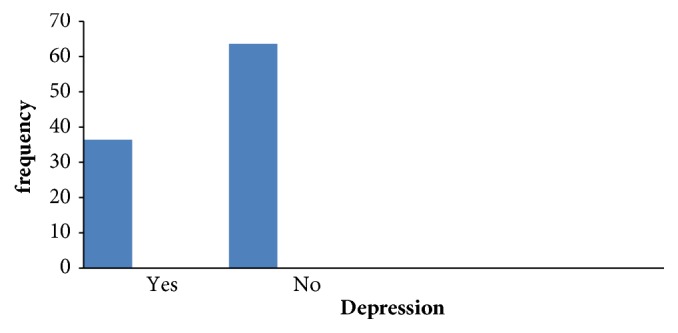Prevalence and Associated Factors of Depression among Orphan Adolescents in Addis Ababa, Ethiopia.
引用次数: 21
Abstract
Background Orphan adolescents are a special group of people who are generally deprived and prone to develop psychiatric disorder even if reared in a well-run institution. Objective To assess the prevalence and associated factors of depression among orphan adolescents living in Addis Ababa orphan centers, Addis Ababa, Ethiopia. Method A cross-sectional study was conducted in 2016 among 453 orphan adolescents in Ethiopia. All orphan adolescents who were living in the selected orphan centers were included in the study. The data was collected by interviewing the orphan adolescents at the orphan center by using a structured questionnaire. Kocher adolescent depression scale and MSPSS scale were used to measure orphan level of depression and their perceived social support. After appropriate coding, the collected data had been entered into EPI info version 7 and it was exported to SPSS version 20 for further analysis. The OR with 95% CI was used to measure association and p value < 0.05 was used as statistically significant value in multivariable binary logistic regressions. Result The overall prevalence of depression among the orphan adolescents was found to be 36.4%. The majority of the respondents, 302 (66.7%), were within the age range of 15-19 years. Perceived social support (OR 5.86; 95% CI 3.47, 9.91), community discrimination (OR 2.68; 95% CI 1.58, 4.56), length of stay (OR 1.90; 95% CI 1.08, 3.35), age of entrance (OR 2.21; 95% CI 1.32, 3.69), and presence of visitors (OR 3.62; 95% CI 2.06, 6.37) were the main variables associated with depression. Conclusion The prevalence of depression among orphan adolescents was found to be high. Low level of social support, higher length of stay, community discrimination, the presence of visitors, and younger age of entrance were statistically significant variables to develop depression.

埃塞俄比亚亚的斯亚贝巴孤儿青少年抑郁症患病率及相关因素。
背景:孤儿青少年是一个特殊的群体,他们通常被剥夺了权利,即使在经营良好的机构中长大,也容易患上精神障碍。目的:评估埃塞俄比亚亚的斯亚贝巴孤儿中心孤儿青少年抑郁症的患病率及其相关因素。方法:2016年对埃塞俄比亚453名孤儿青少年进行了一项横断面研究。所有生活在选定的孤儿中心的孤儿青少年都被纳入了这项研究。数据是通过使用结构化问卷对孤儿中心的孤儿青少年进行访谈而收集的。Kocher青少年抑郁量表和MSPSS量表用于测量孤儿的抑郁水平及其感知的社会支持。在适当编码后,收集的数据被输入EPI信息版本7,并导出到SPSS版本20进行进一步分析。95%置信区间的OR用于测量相关性,p值<0.05用作多变量二元逻辑回归的统计学显著值。结果:孤儿青少年抑郁症的总体患病率为36.4%,其中302名(66.7%)被调查者年龄在15-19岁之间。感知的社会支持(OR 5.86;95%CI 3.47,9.91)、社区歧视(OR 2.68;95%CI 1.58,4.56)、住院时间(OR 1.90;95%CI 1.08,3.35)、入院年龄(OR 2.21;95%CI 1.32/3.69)和来访者(OR 3.62;95%CI 2.06,6.37)是与抑郁症相关的主要变量。结论:青少年孤儿抑郁症患病率较高。低水平的社会支持、较长的停留时间、社区歧视、访客的存在以及较年轻的入学年龄是患抑郁症的统计学显著变量。
本文章由计算机程序翻译,如有差异,请以英文原文为准。
求助全文
约1分钟内获得全文
求助全文

 求助内容:
求助内容: 应助结果提醒方式:
应助结果提醒方式:


